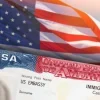Our Visa Manual
Get your Visa Application right.
WHAT IS A VISA
A visa is a travel authorization that gives you temporary entry into another nation. Most of the time, you must apply for a visa in advance of traveling, either online or at an embassy or consulate. A visa may occasionally be obtained upon arrival. Typically, visas are attached to your passport and specify the length of your stay. For security reasons, most nations require visas for visitors to monitor who enters and prevent illegal immigration. Additionally, visas are used defensively to prevent security risks from entering a country.
VISA TYPES WE SPECIALIZE IN
Tourist visas
Tourist visas allow recreational entry. Tourist visas last three months and are non-workable.
Transit visas
Transit visas allow cross-border travel. Transit visas are required for Certain citizens traveling to Canada.
Official visa
Anyone who has official business in a foreign country must apply for an official visa.
This visa enables you work abroad while vacationing. Work-and-holiday visa candidates must be 18–30.
Student visas are granted for the time of your academic program. They can only work in their host countries.
Working abroad requires a work visa. Work visas are normally provided for one to four years.
Family reunification visas are provided to spouses who work abroad.
Investment can be in a startup, bonds, a government fund, etc., but the result must be a cash gain or job.
If you persecuted in your home country, you can apply for a refugee or asylum seeker visa.
Depending on the country, this worker works remotely. This visa requires digital nomad immigration.
Foreigners who retire abroad receive a retirement visa. Only retirees receive a dwelling permit.
Religious pilgrims receive pilgrimage visas. Saudi Arabia issues pilgrimage visas

Do you Need any USA Visa? If YES,
We have got the results that will get you a USA Visa!
